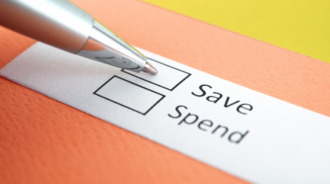

Have you ever thought about going into business with a friend or partner? Before diving in, consider an essential legal document – the partnership deed. A partnership deed should be at the top of your to-do list if you’re starting a new partnership or joint venture. This legally binding agreement establishes the terms of your partnership and helps avoid messy disputes down the road.
A partnership deed outlines things like how responsibilities and decision-making will be shared, how profits and losses will be distributed, and what happens if a partner wants out. While drafting a legal document with your business partner may seem unnecessary when you’re just getting started, a partnership deed gives you peace of mind that you’re both on the same page. Once signed, it protects both parties if things don’t go as planned.
Before starting a partnership, understand precisely what a partnership deed is and why having one in place is so important. This simple agreement could save you from a lot of headaches later on. Ready to learn more? Keep reading to get the full scoop on partnership deeds and why you need one for your new business venture.
What Is a Partnership Deed?
A partnership deed is a legal document that outlines the rights and responsibilities of partners in a business partnership. It’s essentially the contract that establishes the partnership.
Meaning of the Partnership Deed
So, why do you need a partnership deed? As with any legally binding agreement, a partnership deed helps provide clarity and avoid disputes down the road. Some of the key things it will specify are:
- The responsibilities and obligations of each partner. This includes their ownership percentage, roles, and time commitment to the business.
- How profits and losses will be distributed. Will it be evenly split or based on ownership percentage? How will major business decisions be made? By majority rule or unanimous vote?
- What happens if a partner wants to leave or the partnership dissolves? A good deed will outline provisions for buying out a partner’s share and the distribution of assets if the business is terminated.
- Restrictions on the transfer of ownership. For example, requiring partner approval before a partner can sell their share to someone else.
- Dispute resolution procedures. How will disagreements between partners be addressed? Mediation or arbitration?
- Non-compete clauses. Preventing partners from directly competing against the business for a period of time if they leave the partnership.
A thorough partnership deed will help set the right dynamics and expectations between partners. It gives the partnership a solid legal foundation and helps avoid issues that could jeopardize the business down the line. For any partnership, a well-crafted deed is essential.
Types of Partnerships
A partnership deed is a legal document that establishes a partnership between two or more people. It outlines the terms and conditions of how the partnership will operate. Without one, you and your partners don’t have a clear agreement on handling important issues, leading to conflict and legal problems.
There are several types of partnerships you can form. The two most common are general partnerships and limited partnerships.
- General Partnerships
All partners share equally in the business management and are personally liable for all the partnership’s debts and obligations. This means your personal assets are at risk if the business can’t pay its bills.
- Limited Partnerships
Has both general and limited partners. The general partners manage the business and share unlimited liability, while limited partners typically invest money but have limited involvement in management and limited personal liability.
No matter which type you choose, a partnership deed should outline the following:
- The business’s objectives and purpose.
- Contributions by each partner (money, property, expertise).
- Ownership percentages and profit/loss distribution.
- Roles, responsibilities, and decision-making authority of each partner.
- Procedures for resolving disputes.
- Conditions for dissolving the partnership or buying out partners.
A partnership deed helps provide stability and direction for your business. Having an attorney draft an agreement that suits your unique situation and needs is well worth the time and money. Clarity and consensus from the beginning can help prevent uncertainty and conflict.

The Importance of Having a Partnership Deed
A partnership deed is a legal document that outlines the terms and conditions of a partnership between two or more people in business. It’s one of the most important papers you’ll sign when starting a partnership, so make sure you understand why you need it and what should be included.
It protects all partners legally
Partners can face legal issues regarding ownership, profit and loss distribution, liability, and decision-making without a deed. A deed makes the partnership official and helps avoid disputes by clearly establishing each partner’s rights and responsibilities. If a partner leaves or passes away, a deed ensures an orderly transition of ownership and capital.
It defines each partner’s ownership interest
The deed specifies each partner’s percentage of ownership in the business, which determines their share of profits and losses. For example, a 50/50 partnership means each partner owns half the company and receives half the profits. An unequal partnership may have ownership interests of 60/40 or 70/30. The deed prevents future confusion over ownership division.
It outlines the key terms of the partnership
The deed establishes partnership duration, roles and duties of each partner, decision-making processes, profit and loss distribution, capital contributions by each partner, and more. This helps set clear expectations upfront and provides guidance for various situations. Without these terms in writing, partners can encounter issues around leadership, accountability, financial commitments, and long-term planning.
A partnership deed gives your business the legal standing and stability it needs to operate successfully with multiple owners. Though not technically required, creating a deed is one of the smartest moves you can make to build a thriving, long-lasting partnership.
Key Contents to Include in Your Partnership Deed
A partnership deed is a legally binding document that establishes the terms and conditions of a partnership between business partners. It’s one of the most important documents you’ll sign when starting a partnership.
Let’s see the contents of the partnership deed in detail. Here are the key things you’ll want to include:
Responsibilities
Lay out each partner’s roles, responsibilities, and decision-making power of each partner related to managing the business and employees. Be as specific as possible to avoid confusion and conflict down the road.
Ownership
State each partner’s ownership percentage and share of profits/losses. Will ownership stakes change over time? How will partners exit the partnership, and how will their ownership be handled? Address buyout provisions in case a partner wants to leave.
Capital Contributions
Detail each partner’s initial and ongoing financial contributions to the business, like cash, assets, or loans. How and when will additional funds be contributed if needed?
Profit/Loss Distribution
Specify how profits and losses will be distributed to each partner based on ownership percentage. Will distributions be made monthly, quarterly, or annually?
Dispute Resolution
Outline steps for handling disputes between partners to avoid lengthy court proceedings. Will you use mediation or arbitration? Who pays if a dispute arises?
A partnership deed helps establish a strong foundation of trust and understanding between partners. Be transparent, address any concerns upfront, and have a lawyer review the final document. With a solid partnership deed in place, you’ll be poised to build a successful business together for years to come.
Taxes and Partnerships
As a partner in a business, you’ll need to consider how the partnership’s income and expenses are taxed. The partnership itself does not pay income taxes. Instead, each partner pays taxes on their share of the partnership’s taxable income, whether or not it is actually distributed to the partners.
Tax Filing Requirements
The U.S. partnership must file an annual information return with the IRS, Form 1065, which reports the partnership’s income, deductions, and other tax-related information. Each partner then reports their share of the partnership’s income and deductions on their personal tax returns. As a partner, you’ll receive a Schedule K-1 from the partnership showing your share of income, losses, deductions, and credits. You must report the amounts from Schedule K-1 on your personal tax return.
Paying the Tax Bill
Although the partnership pays no income tax itself, it may be required to make tax payments on behalf of the partners. This includes estimated quarterly tax payments and any taxes due when filing the return. The partnership should withhold these tax payments from your distributions and profits. If not enough is withheld, you may owe additional taxes when you file your personal return.
Decisions About Income and Deductions
As partners, you’ll need to make important decisions about allocating the partnership’s income, deductions, gains, losses, and credits between the partners. Usually, these items are allocated according to the ownership percentages specified in the partnership agreement. However, you can also allocate certain items disproportionately if desired. These decisions can impact how much tax each partner owes, so choose wisely.
With some forethought about taxes, you can avoid unwanted surprises and ensure the partnership meets all its obligations. But as always, consider consulting a tax professional to ensure you fully understand your responsibilities as a partner. They can advise you on how to structure and operate your partnership.
How to Draft an Effective Partnership Deed
To draft an effective partnership deed, there are a few key things you’ll want to include. A partnership deed, also known as an agreement or contract, is a legal document that outlines the terms of a partnership between businesses or individuals.
Define the Partnership
First, give your partnership a name and explain its purpose. Will you be running a retail store together? A consulting firm? Be as specific as possible in defining your joint business venture.
Outline Partner Responsibilities
Clearly lay out each partner’s responsibilities and obligations. For example, if Partner A handles daily operations and Partner B oversees marketing, specify each partner’s role. This helps avoid confusion and conflict down the road.
Determine Ownership & Profits
State each partner’s ownership percentage and share of profits and losses. For example, Partners A and B each own 50% of the partnership, are entitled to 50% of all profits, and are responsible for 50% of all losses. You’ll also want to explain how profits and losses will be distributed yearly.
Set Decision-Making Process
Establish how business decisions will be made. Will you vote on major decisions? Require unanimous agreement? For day-to-day choices, specify who can make which types of decisions. This prevents stalled progress due to failure to agree.
Allow for Changes or Dissolution
Discuss how to amend or terminate the partnership if needed. For example, you may require written consent from all partners to modify the deed. To end the partnership, detail how assets and liabilities will be distributed upon dissolution.
An effective partnership deed anticipates obstacles and paves a smooth path forward for your business venture. Be thorough and transparent, and think through hypothetical scenarios as you draft the agreement. With a strong deed in place, you and your partners can avoid confusion and conflict, ensuring you’re all on the same page for the success of your partnership.
Conclusion
You now know what a partnership deed is and why having one in place is so important for any partnership business. It helps ensure all partners are on the same page regarding their rights, responsibilities, and shares in the company. While creating a partnership deed requires time and effort, it can save you from many headaches, conflicts, and legal troubles. For your business’s and partnership’s wellbeing, make establishing a comprehensive partnership deed a top priority. Your future self will thank you.











